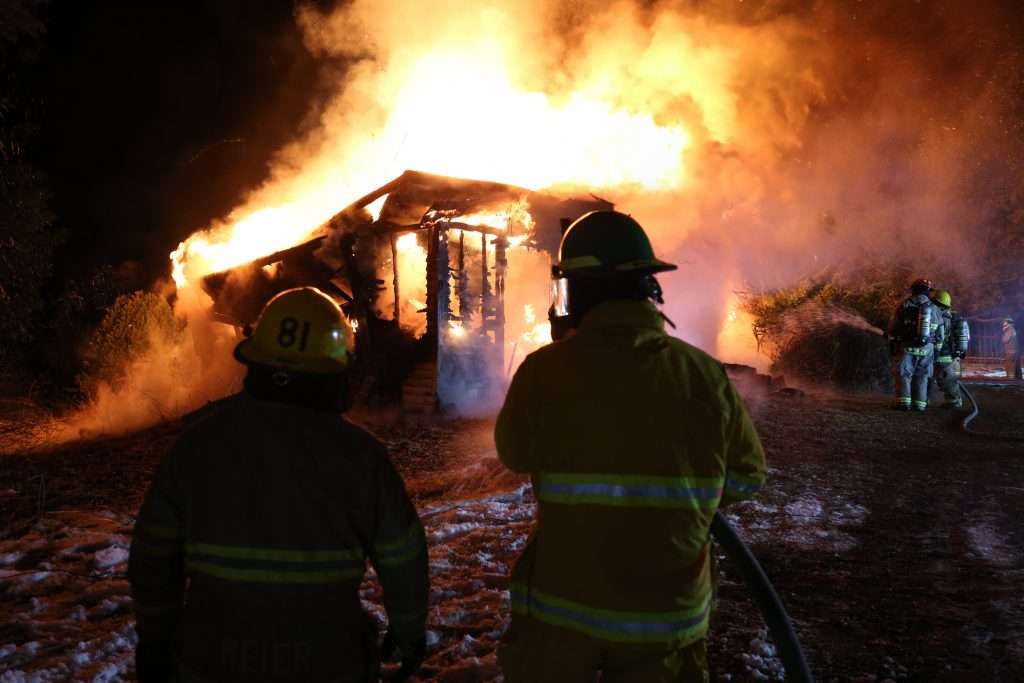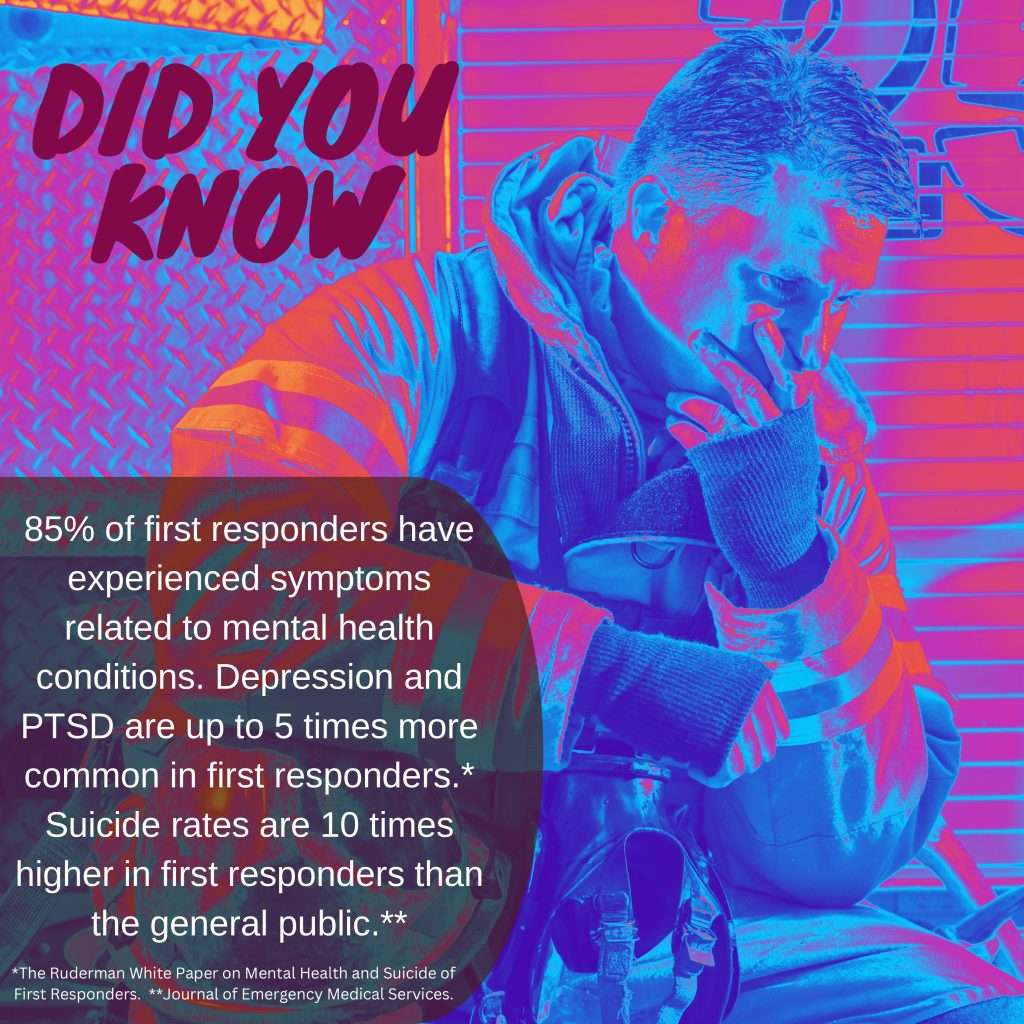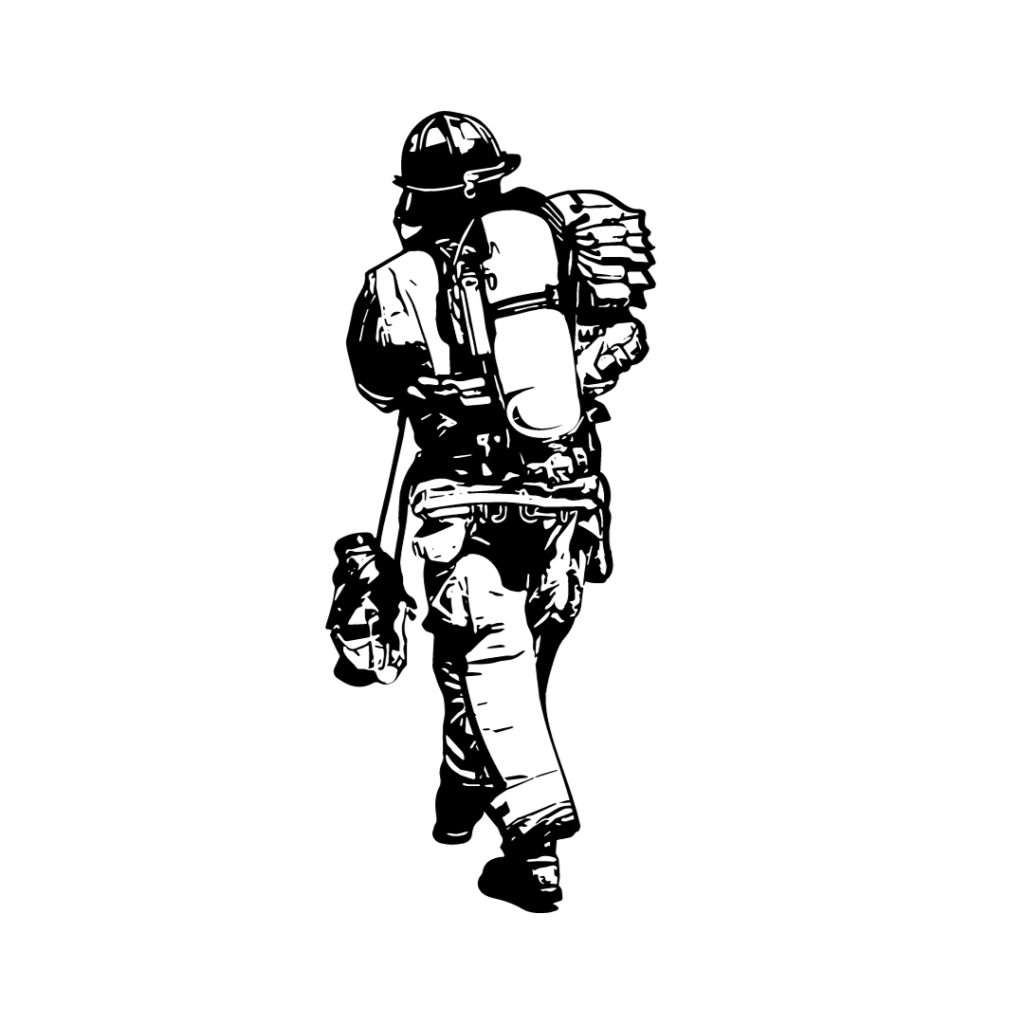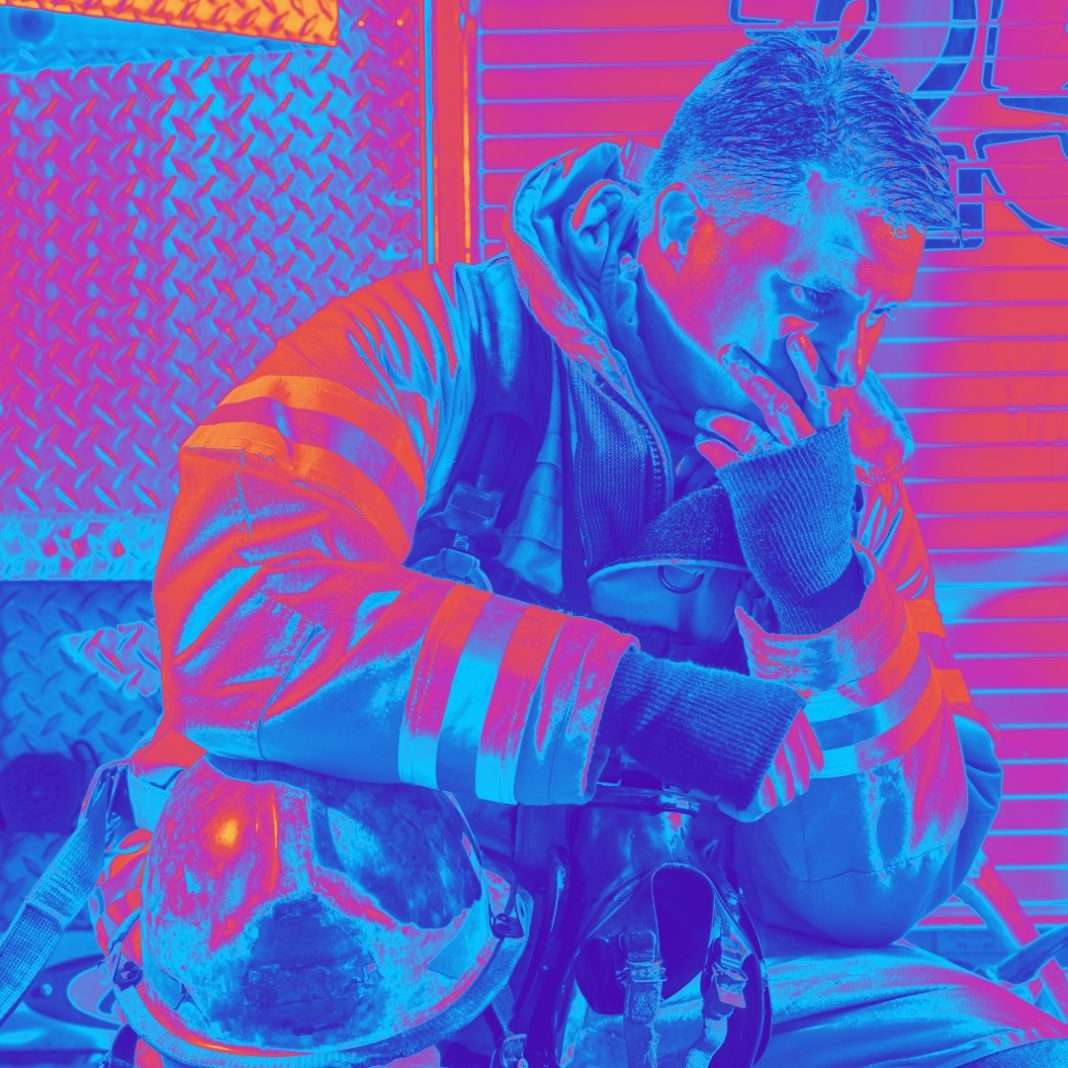In the realm of public safety, first responders are the everyday heroes among us who rush headfirst into emergencies, often saving lives or property, and at great personal risk. They face a unique set of challenges and stressors that can take a severe toll on their mental health and personal relationships. They are regularly thrown into traumatic situations, witness immense human suffering, and face life-and-death decisions.
Here in Michigan, we have 121 departments where everyday men and women with careers and jobs outside of firefighting volunteer to rush toward emergencies. What drives them to volunteer is a story that begins with our story Heroes Among Us, and one we will continue to tell. Our focus in this article is on the mental health aspect of first responders – volunteer and otherwise.

The combination of exposure to trauma, demanding schedules, and physically challenging roles puts first responders at an increased risk for mental health issues such as depression, post-traumatic stress disorder (PTSD), stress, anxiety, substance abuse, and suicidal behaviors.
As reported by The Colombia Lighthouse Project, the national Fallen Firefighters Foundation reports that a fire department is three times more likely in any given year to lose a firefighter to suicide than to a death in the line of duty. A national Florida State University study of more than 1,000 firefighters found that nearly 50 percent had suicidal thoughts at some point during their career, and about 16 percent reported one or more suicide attempts.
A survey of EMTs and paramedics in the U.S. found that 37 percent had contemplated suicide and 6.6 percent had attempted it.
Another study published in the Journal of Emergency Medical Services found that EMS providers have suicide rates nearly 10 times higher than the general population.

It’s important to note that 65 percent of firefighters in the US are volunteer firefighters, and here in Michigan with our 121 all-volunteer or mixed volunteer fire departments, our firefighters act as full EMS in many instances.
It is rather ironic, and undeniably disheartening, that amid their fearlessness of rushing headfirst into emergencies, a deeply ingrained “code of silence” prevails within their community, and sadly, in the broader context of mental health in the United States. These outwardly fearless individuals, who are trained to exude strength, fearlessness, and an unwavering resolve, find themselves constrained by a culture that discourages them from acknowledging the emotional trauma they carry within. And this has led to catastrophic consequences, as highlighted earlier.
It is long overdue for us to boldly face this issue head-on and rally behind the mental health of those who have devoted their lives to fearlessly – and sometimes sacrificially – charging into the heart of trauma. It’s not just about supporting and safeguarding the individuals who make up our first responder community; it’s about nurturing the resilience and strength of our people, bolstering the well-being of our communities, and fortifying the very fabric of our country. It’s a mission we cannot afford to outright ignore or brush aside any longer.
Breaking the Silence
Acknowledging the mental health challenges facing first responders is the first step towards breaking the silence and stigma. It is ESSENTIAL – and I cannot stress this enough – to create a culture where seeking help is not seen as a sign of weakness, but as an act of strength and self-care.
Vulnerability is the essence of humanity. Allowing oneself to be vulnerable is a SUPERPOWER. I repeat. Allowing oneself to be vulnerable is a SUPERPOWER. People are starting to realize this. Many departments are starting to implement programs and support systems to address mental health. More need to do it. In fact, all need to do it. It needs to become not a matter of questioning whether we need such programs, but a matter of such programs being a requirement.
Resources, Education, and Training
For first responders, it is critical to have access to confidential, specialized mental health resources, education and training that understands their unique circumstances. They themselves need to be educated on the signs of mental health issues, and to recognize when someone may be struggling, including themselves. This is critical to facilitating early intervention and support.
Changing the Culture
Ultimately, changing the culture around mental health within the community at large and especially within the first responder community is essential. It requires open and honest conversations about mental health, providing opportunities for seeking help without fear of repercussions and stigma. We must instill the belief that mental well-being is as important as physical health – because it is! In fact, mental health plays a large role in our physical health for all the reasons stated in the opening of this article, and more.
Suicide is preventable, and recovery is attainable. To achieve both goals, we must tackle the mental health stigma head-on. We need to educate ourselves on how to spot when someone needs support and to what extent, and that starts with asking the right questions. Equally crucial is ensuring we have the essential resources in place to facilitate this life-saving and healing journey.

Below, you will find a simple and incredibly effective protocol created by The Columbia Lighthouse Project under the auspice of Columbia University. Its mission is to assess risk and prevent suicide in first responders and the community at large – the protocol’s use is universal and simple: “Just ask. You can save a life.”
How to Use the Protocol
The following information is direct language from the Columbia Lighthouse Project. Click here to download the first responder’s protocol.
Ask Your Community. Ask Your Fellow Firefighter. Care & Escort Them to Help.

The Columbia Protocol, also known as the Columbia-Suicide Severity Rating Scale (C-SSRS), supports suicide risk assessment through a series of simple, plain-language questions that anyone can ask. The answers help users identify whether someone is at risk for suicide, assess the severity and immediacy of that risk, and gauge the level of support that the person needs.
Asking Questions
Protocol administrators ask a series of questions about suicidal thoughts and behaviors. The number and choice of questions they ask depend on each person’s answers. The questioner marks “yes” or “no,” as well as how recently the thought or behavior occurred and a scoring of its severity. The shortest screeners are condensed to a minimum of two and a maximum of six questions, depending on the answers, to most quickly and simply identify whether a person is at risk and needs assistance. For a more thorough assessment of a person’s risk, Columbia Protocol askers should use the standard scale.
The Columbia Protocol questions use plain and direct language, which is most effective in eliciting honest and clear responses.

Determining Next Steps
To use The Columbia Protocol most effectively and efficiently, an organization or person, can establish criteria or thresholds that determine what to do next for each person assessed. Decisions about hospitalization, counseling, referrals, and other actions are informed by the “yes” or “no” answers and other factors, such as the recency of suicidal thoughts and behaviors.
The Columbia Lighthouse Project provides many examples of triage documents that Columbia Protocol users in hospitals, primary care practices, behavioral health care facilities, military services, prisons, and other settings employ to make these decisions. The Project also provides assistance to any organization that is thinking through its policy and establishing a care plan. And the information is free to all.
Listen to our podcast with volunteer firefighters from the East Jordan and Charlevoix Township fire departments in Michigan below. Read the sister article Heroes Among Us.
Identify risk. Prevent suicide. Together, we can make a difference.
The Columbia Lighthouse Project
Help support our Bring the Love Initiative to support volunteer firefigthers throughout the Great Lakes Basin Region. Learn more about the initative and donate on our Foundation website. Shop our gear and products to help support this initiative on our Shop website.











